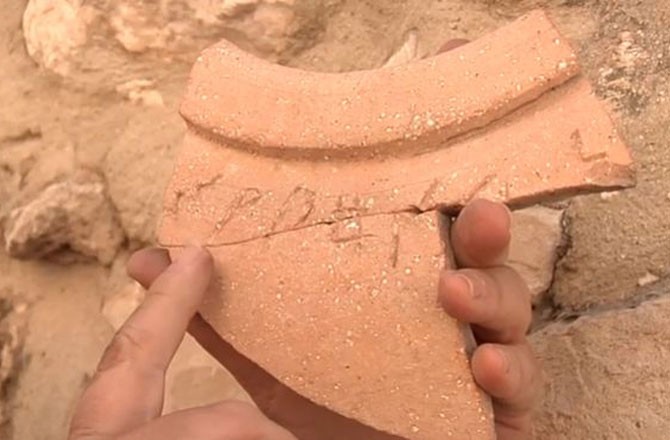The news just loves to jump on a story that seems to contradict the Bible.
Headlines all over the net, from USA Today to the New Zealand Herald are blithely repeating a story that biblical archaeologists have proven wrong the account in Genesis chapter 12, which says that a ruler in Egypt gave Abraham some domesticated camels.
The story goes like this:
Dr Erex Ben-Yosef and Dr Lidar Sapir-Hen of Tel Aviv University's Department of Archaeology and Near Eastern Cultures found camel bones in an archaeological site that was anciently a copper smelting community, a dig that has been positively dated to between the 11th century and the 9th century B.C.E. They found camel bones at the level of 1000 B.C.E. and later, but none earlier. They used radiocarbon dating to confirm that the bones were indeed 10th century - 1000 years before Christ.
Therefore, say they, domestic camels weren’t around Israel prior to 1000 BCE.
Leaving aside for the moment that they’re digging up a copper smelting site that dates to the exact time period when the Bible says Solomon was busy using thousands of tons of copper to build the Temple and its utensils – giving more credence to the biblical narrative, not less - there are holes in their assertion big enough to drive a camel caravan through.
Archaeologists – the real ones, not the kind who love to grab headlines claiming they’ve disproved the Bible – have established that camels were domesticated in Southern Arabia somewhere between 3000 and 2000 B.C.E., and were definitely in Egypt by 2000 B.C.E.
From Southern Arabia to Canaan is about 1200 miles, and to Egypt even less.
A camel can walk, fully loaded, about 30 miles a day for days on end.
It would therefore take a camel train about 40 days to make the trip from Southern Arabia to Abraham’s home in the Promised land, less than that to travel there from Egypt.
Honest archaeologists have found abundant evidence of a brisk trade between Judea and Southern Arabia as early as 2000 B.C.E. If that trade was not moving by camel, how was it moving?
So, they found bones of a camel they’ve dated to 1000 B.C.E. and they claim camel bones are absent in earlier excavations. However, the same articles also contain this intriguing sentence:
“Any bones found in earlier archaeological layers most likely belong to wild camels, which are believed to have been in the area from the Neolithic period or earlier.”
Well, that’s convenient: ‘We’ve decided there were no camels around when the Bible says Abraham had camels, so if any camel bones are found that could be dated back to that time, they must be wild camels.’ How’s that for circular reasoning?
According to real experts, camel domestication had to have happened in stages. Because wild camels thrived in a desert unfriendly to predators, they were likely easy for humans to prey on. Gradually, people would have figured out how to herd them, then how to gentle them for milking, then for draft work, and finally how to ride them. To this day, there are wild camels, camels slaughtered for meat, camels used for milking and plowing and hauling loads, and camels used for riding.
So what do the bones of a camel in a 10th century B.C.E. dig prove? What is proven by the absence of ‘domestic’ camel bones in older digs? Well, I suppose I could just as easily claim that the bones prove:
- That 10th century B.C.E. copper miners developed a taste for camel steak that they hadn’t had previously, or,
- I could claim that camels had been rare in the area prior to that time period because the mining industry was too small to justify their presence, whereas the industry got a colossal boost from Solomon’s Temple construction project, or
- I could as easily claim that camel ‘technology’ was hoarded by Arabians, and thus while camels may have come to the copper area frequently bringing trade goods and carrying away copper, the absence of camel bones only proves that the traders didn’t allow the valuable animals to be slaughtered in Judea.
- I could even claim that, perhaps camel bones disintegrate after a few thousand years, depending on what kind of soil they ended up in.
“Hamilton cites an Alalakh text (18th century B.C.E.) with ration lists including that of "one (measure of) fodder - camel", the very fact of feeding it seems to imply its domestication or use as a pack animal. Camel bones were also excavated at Mari in an early house possibly dating back to c.2400 B.C.E. An 18th century B.C.E. Byblos relief depicts a kneeling camel further suggesting its domestication and use as a beast of burden.”
Interestingly, according to that same author, “…the list of possessions [Abraham] gained in Egypt excludes horses…” As horses were not in use in Egypt before 1800 B.C.E., that’s not surprising.
But let’s reason on this: if Genesis was a fable written in the 10th century or later as Ben-Yosef and Sapir-Hen are claiming, at a time when Egypt was famous for horses, wouldn’t that unknown theoretical writer have claimed that Abraham was given horses instead of, or in addition to, camels?
The preponderance of the evidence, then, is that the account in Genesis 12 is true: Abraham was given camels while in Egypt. His successors Isaac, Jacob, and Joseph also used with them.
And a few camel bones unearthed in a 10th century B.C.E. dig do nothing to disprove that.
Bill K. Underwood is the author of several novels and one non-fiction
self-help book, all available
at Amazon.com.



